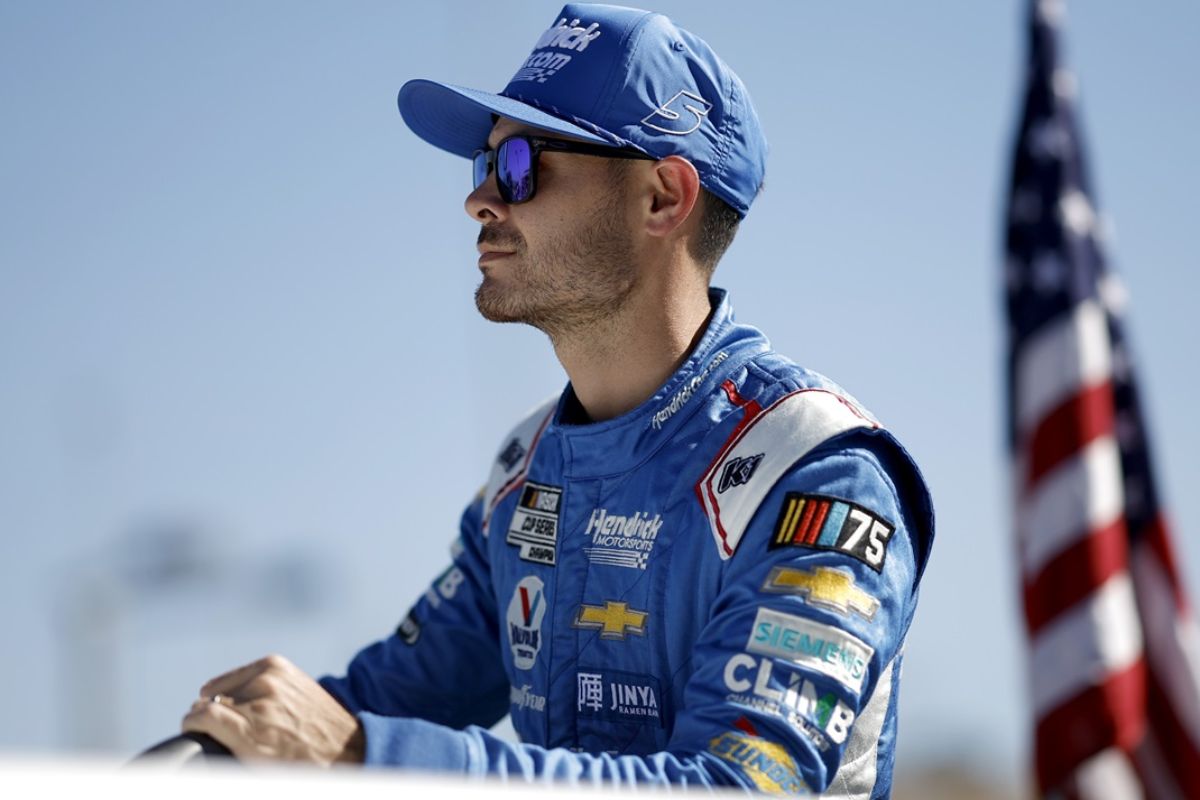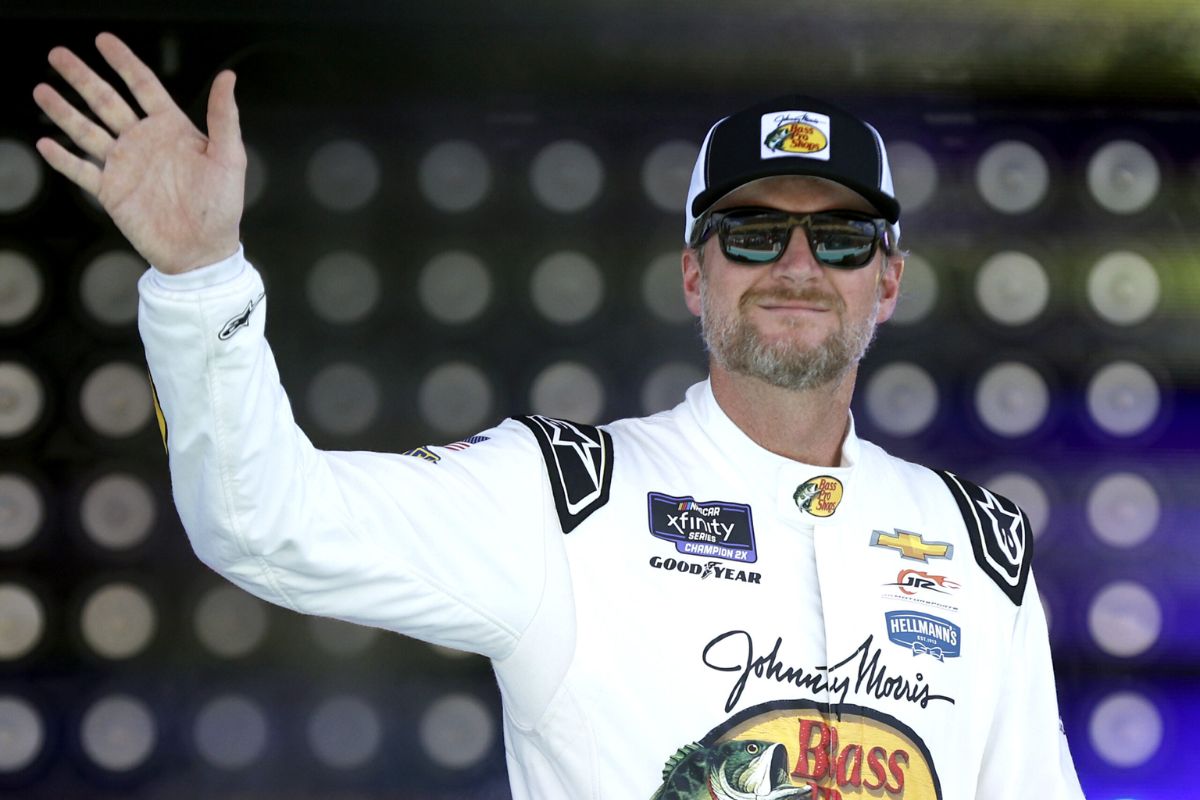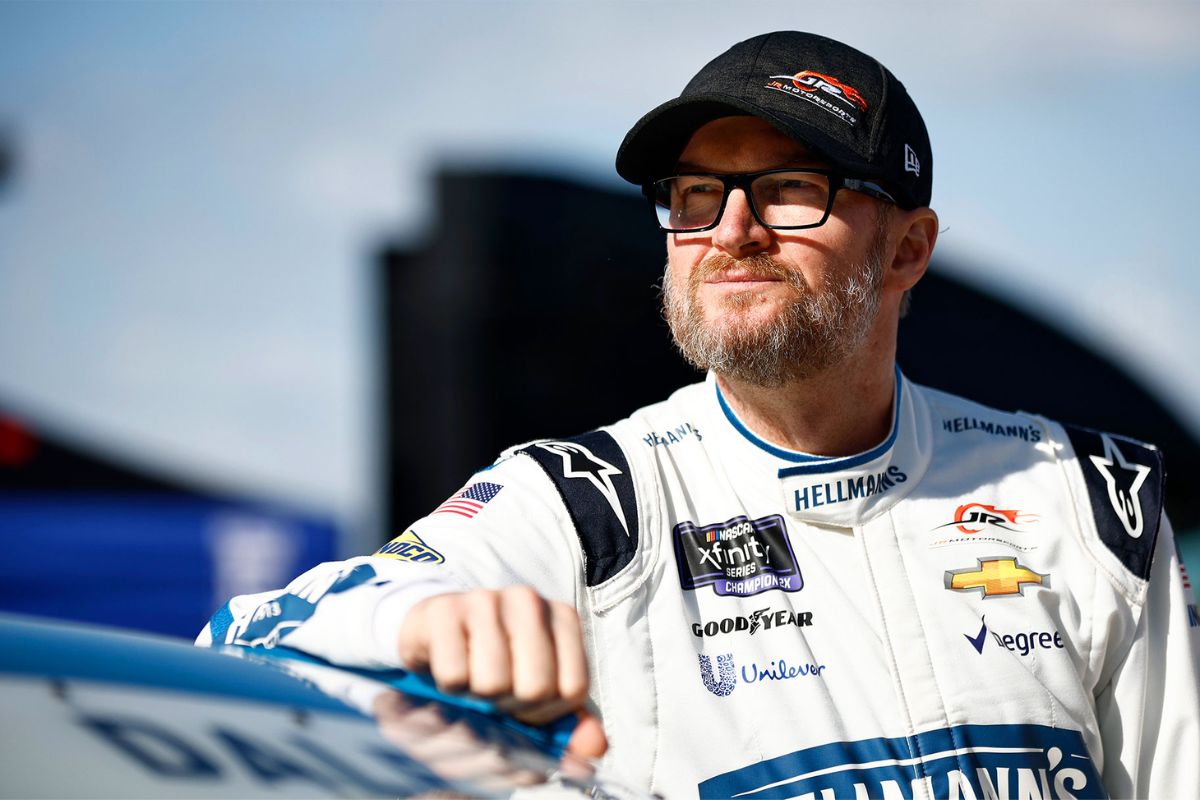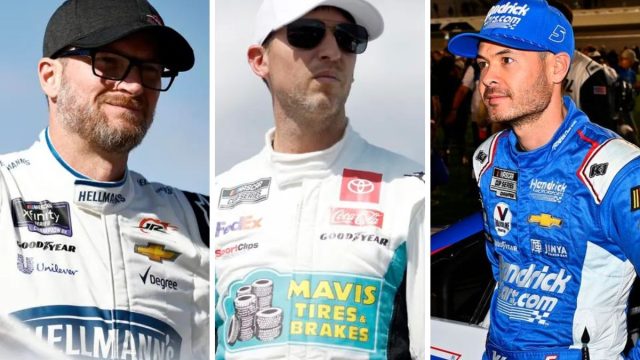Dale Jr Slams Hamlin and Larson Refusal: In NASCAR, Dale Earnhardt Jr.’s pointed critique of Denny Hamlin’s reaction to Kyle Larson’s skepticism about the effectiveness of certain racing technologies has ignited a significant conversation about the evolution of the sport. Earnhardt Jr. argues for a minimalistic approach to technology to preserve the raw skills that define NASCAR. This divergence in viewpoints not only reflects the broader tension between tradition and modernization in motorsports but also raises questions about the future direction of NASCAR.
Key Takeaways
- Dale Earnhardt Jr. criticizes Denny Hamlin for supporting the use of rear-view cameras in NASCAR.
- Earnhardt Jr. argues that such technology diverts from driver skill and race authenticity.
- The dispute centers around Hamlin’s defense of technology use, mainly for safety and precision during restarts.
- Earnhardt Jr. emphasizes maintaining traditional racing skills and conditions without excessive technological intervention.
- The debate highlights a broader community division on the balance between innovation and tradition in NASCAR.
Denny Hamlin’s Displeasure with Kyle Larson’s Comments
Denny Hamlin expressed strong dissatisfaction with Kyle Larson’s critical remarks regarding the strategic use of the rearview camera in NASCAR’s Next Gen cars. Following his victory at the Wurth 400, Hamlin faced criticism from Larson, who questioned the ethics and sportsmanship of using the rearview camera for air-blocking tactics during races. Hamlin, who is not only a competitor but also a co-owner at 23XI Racing, defended his use of the technology, emphasizing that its role was minimal and primarily limited to restarts rather than a continuous strategic advantage throughout the race.
“I think that I won so there’s going to be bi**hing.”- (Denny)
Hamlin suggested that Larson’s comments might stem from frustration or disappointment associated with the race’s outcome. By asserting that complaints only arise following losses, Hamlin positioned himself against what he perceived as a pretextual argument against his victory. This response is characteristic of Hamlin’s often direct and unapologetic racing persona, where he takes on the role of a NASCAR ‘villain’ to some extent, challenging the status quo and defending his competitive tactics robustly.

Dale Earnhardt Jr’s Opinion on the Rear-View Camera
Amid the controversial debate over the use of rear-view cameras in NASCAR, Dale Earnhardt Jr. has voiced his support for Kyle Larson, critiquing the technology’s impact on race tactics. This technology, intended to improve driver safety and performance, has sparked discussions on its influence on the competitive nature of racing. While some see it as a step forward, Earnhardt Jr. expressed concerns over its strategic implications during races.
The digital camera allows the driver a very very good understanding of what’s going on behind him, a traditional old-school mirror is blocked by row bars, and those little slots in the back of the windshield sort of make it difficult to understand what’s ‘exactly happening behind you.”-(dale jr.)
- Strategic Disadvantage: Earnhardt Jr. argues that the rear-view camera provides certain drivers with an unfair advantage, particularly in defensive driving scenarios. He believes that the technology makes it too easy for leading drivers to block challengers, which could hinder overtaking tactics.
- Purity of Racing: There’s a suggestion from Earnhardt Jr. that the reliance on technological aids, such as rear-view cameras, detracts from the raw skill and instinct that racing traditionally celebrates. He posits that this could lead to a standardization of driving styles, where technology overshadows talent.
Earnhardt Jr’s Reply to Hamlin’s Stance
Dale Earnhardt Jr openly criticized Denny Hamlin’s support for the rear-view digital camera, highlighting a fundamental disagreement over its impact on NASCAR racing strategies. Earnhardt Jr’s argument stems from a broader conversation about technology’s role in racing and whether innovations such as the digital camera preserve the sport’s integrity or distort competitive dynamics. His critique was not just a divergence in technological preference but an ideological clash concerning the balance between tradition and modernization in NASCAR.
“There’s blind spots where you don’t know where cars are going or where they’re at in the corner. So that traditional mirror is so imperfect that it’s perfect. And I honestly feel like, now they won’t do this because they spent a lot of money on the digital camera, but I think they should get the cameras out of the car.” ”-(Dale jr.)
Earnhardt Jr pointed out that the rear-view digital camera might offer an undue advantage by altering the natural racing conditions which traditionally relied on driver skill and team strategy. This technology, according to him, could potentially diminish the raw and authentic racing experience by overlaying a technological advantage that interferes with the direct competition on the track. His perspective is rooted in a classic racing ethos that values the human elements of split-second decision-making and situational awareness.

Earnhardt Jr’s Experience and Insight
How does Dale Earnhardt Jr.’s extensive racing experience shape his critical perspective on the integration of technological advancements like the rear-view digital camera in NASCAR? As a seasoned veteran, Earnhardt Jr. brings a detailed understanding of the practical implications of racing technologies. His insights are rooted in a deep familiarity with the dynamics of high-speed racing and the unique challenges posed by NASCAR’s evolving vehicle designs.
(dale jr.), “I went and raced a race one time, and the cars, it was Super Late Model cars, and they had no mirrors, I found that really fascinating because not knowing what’s happening behind you put the driver in a very curious situation. It was just limited information and made it more difficult to know what to do.”
- Visibility vs. Skill: Earnhardt argues that the improved visibility provided by digital cameras reduces the skill required to manage and anticipate racing conditions. Traditional mirrors, with their limitations, demanded higher situational awareness and driver skill.
- Impact on Race Dynamics: The digital camera alters how drivers engage with competitors during races. Earnhardt believes that the perfect imperfection of traditional mirrors added a strategic complexity to racing that the cameras diminish.
- Technological Reliability: Earnhardt is also cautious of over-reliance on electronic systems, which could fail or malfunction, unlike simple, robust mechanical systems like traditional mirrors.
Community Response and Discussion
The community’s response to Dale Earnhardt Jr.’s critique of the rear-view digital camera in NASCAR has been distinctly divided, reflecting a broad spectrum of opinions on technological integration in the sport. While some praise Junior’s call for a more traditional, sensory-driven racing experience, others argue that technological advancements such as the rear-view camera improve safety and competitiveness.
The debate centers on whether these innovations uphold the spirit of racing or detract from the raw skills it traditionally celebrated. Earnhardt Jr.’s perspective is rooted in a nostalgia for a purer form of racing, where drivers relied more heavily on instinct and awareness. Conversely, proponents of the rear-view camera argue that it represents a natural evolution of the sport, where safety and precision play significant roles.

News in Brief: Dale Jr Slams Hamlin and Larson Refusal
Dale Earnhardt Jr.’s critique of Denny Hamlin’s defense against Kyle Larson’s traditionalist views on NASCAR technology highlights a crucial debate within the racing community. This discussion brings to light the tension between technological advancement and the preservation of conventional racing skills.
Earnhardt Jr.’s perspective not only mirrors his extensive experience in the sport but also sparks broader community engagement and dialogue about upholding the integrity and competitive nature of NASCAR amidst evolving technological landscapes.
Our Reader’s Queries
Q. What ethnicity is Kyle Larson?
A. In 2013, Larson clinched the Nationwide Series Rookie of the Year award with 9 top 5 finishes and 17 top 10 finishes. He made history as the first Asian-American and Drive for Diversity participant to win a Rookie of the Year Award in one of NASCAR’s national touring series.
ALSO READ: Dale Jr’s Talladega Jinx Strikes JR Motorsports!
